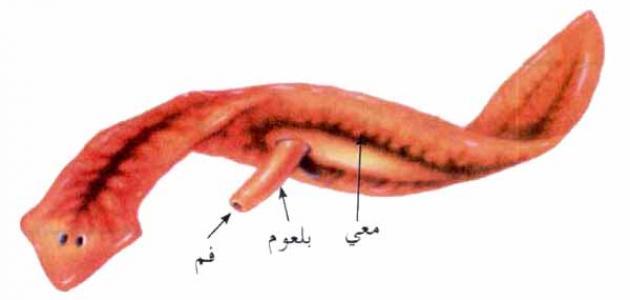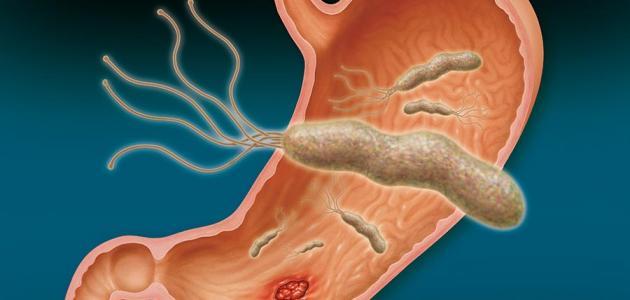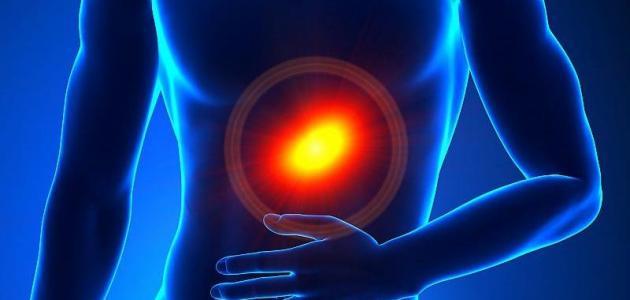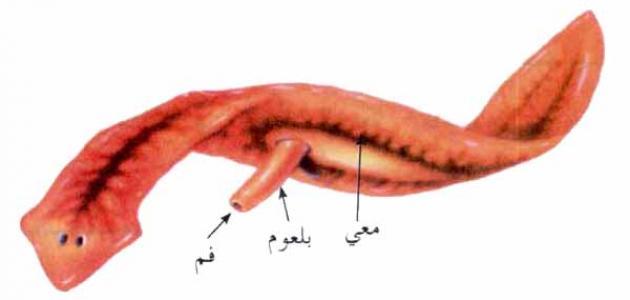hernia
It is God’s wisdom to surround the internal organs in the abdomen with a muscular wall called the peritoneum, in order to preserve them in the place designated for them, and in the event of any weakness or hole in the wall, this allows the organs and tissues to exit from their place, resulting in a protrusion or protrusion in the abdomen. The region, and this protrusion is known as a hernia or hernia (in English: Hernia). Although the hernia problem can occur in several areas of the body, including; The upper thigh, the navel, the abdomen, and others, but the abdomen is the most vulnerable part of the body to hernia.
Hernia causes
Hernia occurs in the event that there is a weak or open area in the muscle or connective tissue surrounding the internal bowels, for several reasons, including; These muscles or tissues have been damaged after surgery in the area, chronic coughing, advanced age, malnutrition, or smoking, provided that this weakness in the muscles is accompanied by factors that increase pressure on the abdominal area such as carrying heavy objects, or Diarrhea or constipation, pregnancy, fluid accumulation in the abdominal cavity, or surgery in the area. It is worth noting that muscle weakness may have been present since birth as a result of incomplete closure of the abdominal wall during intrauterine pregnancy.
Types of hernia
Here is an explanation of the types of hernia:
Read also:Hernial components- Inguinal hernia: (In English: Inguinal hernia) Inguinal or inguinal hernia constitutes 70% of all types of hernias, and it occurs as a result of the eruption of part of the intestine through a weak spot in the lower part of the abdominal wall, especially through the inguinal canal; Which is found in the groin area in both men and women, and passes through it the spermatic cord responsible for carrying and fixing the testicles in their place in men, while the inguinal canal in women contains a ligament that helps to carry and stabilize the uterus in its place. It is worth noting that this type is more common in men than in women. As the testicles descend to their location through the inguinal canal immediately after birth, and hernia may occur in the event that the inguinal canal is not completely and correctly closed afterwards.
- Femoral hernia: Femoral hernia occurs when the contents of the abdominal cavity, mostly the intestines, protrude through the femoral duct, which allows the femoral artery, the femoral vein, and the femoral nerves to pass through the abdominal cavity and reach the thigh. This type of hernia often occurs in women in the upper part of the thigh, especially if the woman is pregnant, or suffers from obesity.
- Umbilical hernia: Umbilical hernia occurs in infants at the beginning of their lives before they reach the sixth month of life, when part of the intestine protrudes through the abdominal cavity through the navel, and the protrusion appears mostly during their crying. And from the wisdom of the Creator, with the passage of time, the strength of the muscles of the abdominal wall increases, allowing the umbilical hernia to disappear by itself without any medical intervention in case it was small, and this type of hernia is the only type that can recover on its own without any medical procedure. But if the child reaches the age of one or two years and the umbilical hernia remains visible, the child may need surgery to get rid of it later. It should be noted that the umbilical hernia may occur later in those who are older in the event that there remain weak areas in the abdominal wall, in addition to the possibility of its occurrence in pregnant women or after childbirth due to the pressure that the region is exposed to during the birth process.
- Incisional hernia: (In English: Incisional hernia) Sometimes a hernia occurs in an area of the abdomen in which a surgical operation was previously performed, so part of the intestine exits through the abdominal wall from this weak point, and this type of hernia spreads among the elderly and those who are overweight and do not lead an active life yet perform the operation.
- Obturator hernia: (in English: Obturator hernia) It is a rare type of hernia that occurs mostly in women, and its diagnosis is difficult because there is no visible protrusion outside; The components of the pelvic cavity protrude through the foramen obturator, an opening in the pelvic bones.
- Epigastric hernia: (English: Epigastric hernia) This hernia occurs most often of the fatty tissue located in the middle of the abdomen between the navel and the end of the rib cage in particular, to come out from a weak point in the wall, causing a painless hernia, but it cannot be pushed inside.
- Hiatal hernia: Hiatal hernia This type of hernia occurs when part of the stomach protrudes into the thoracic cavity through the diaphragm muscle. abdominal cavity. Hiatal hernia mostly affects the elderly, and is usually associated with the problem of gastroesophageal reflux (in English: Gastroesophageal reflux), which is the return of stomach contents to the esophagus.
Hernia symptoms
The bulge or protrusion in the area affected by the hernia is the most prominent and important symptom that the patient may notice, as the hernia can be touched while coughing, standing, or bending down, while parents can notice the hernia clearly in their children and touch it while they are crying. There are some common symptoms associated with inguinal hernia, including; Pain and discomfort in the affected area, a feeling of heaviness or pressure in the abdomen, and a burning sensation in the area. As for hiatal hernia, it is characterized by the appearance of symptoms of acid reflux, chest pain, and difficulty swallowing. In the case of obturator hernia, the patient may experience symptoms similar to bowel obstruction, such as vomiting and nausea.
Read also:Symptoms of stomach and colon bacteriaIn terms of symptoms, hernias can be divided into three main groups:
- Reversible hernia: (in English: Reducible hernia) This type is characterized by the appearance of a recent swelling with the possibility of pushing it back and returning it to the abdominal cavity if it is small in size, and sometimes the patient may feel pain in the area before seeing the swelling in it, but this type does not cause pain when touched Usually, but it is noted that the size of the bump increases when standing or there is pressure on the abdominal area.
- Irreversible hernia: (in English: Irreducible hernia) This type represents the middle case between the retractable hernia and the strangulated hernia (in English: Strangulated hernia), as it is often an old hernia that was retractable, but its size has increased, and it can no longer be pushed into the abdominal cavity, and it may continue on This is the case for a long period of time without causing pain, and the hernia can develop and lead to stopping the blood flow of the tissue confined to the hernia.
- Strangulated hernia: It is an irreversible hernia, but there has been an interruption in the blood flow to the area confined to the hernia, and it is considered an emergency surgical case. Where a person goes through a state of fatigue and fatigue that is permanently accompanied by pain, and sometimes it is followed by heat and symptoms of intestinal obstruction such as nausea and vomiting.
Hernia diagnosis
The doctor may not need any diagnostic tests in the event that the hernia is clear and prominent, but if the hernia is not clear and the patient complains of hernia symptoms, the doctor touches the area after the patient stands or coughs in order to notice the protrusion during the increase in pressure on the area. While the doctor needs some tests to confirm the presence of a hernia in some cases, and these tests include:
Read also:How to expel gas from the abdomen- Barium radiograph: (in English: Barium X-ray) Several pictures of the digestive system are taken using x-rays, after the patient drinks a liquid containing barium, and this examination is suitable for diagnosing a hiatal hernia.
- Endoscopy: (English: Endoscopy) During this examination, the doctor passes a tube attached to a small camera through the larynx towards the esophagus and then into the stomach in order to observe the inner region of the stomach. This examination is also suitable for diagnosing a hiatal hernia.
- Ultrasound image: (in English: Ultrasound) An image of the internal body structure is made using high-frequency sound waves, and this examination is suitable for diagnosing an umbilical hernia.
Hernia treatment
Hernia treatment depends on the size of the protrusion and the severity of the symptoms experienced by the patient. The following are some treatment options for hernia:
- Lifestyle changes: Some exercises determined by the doctor can strengthen the muscles surrounding the hiatal hernia, in addition to some dietary changes that may contribute to reducing the symptoms resulting from the hiatal hernia, and examples of appropriate dietary changes are; Avoid heavy meals, do not lie down immediately after eating, maintain a healthy weight, quit smoking, and avoid spicy food.
- Pharmacological treatments: Where drugs that reduce stomach acidity resulting from a hiatal hernia can be used, such as antacids, H-2 receptor blockers, and proton pump inhibitors.
- surgery: Surgical treatment remains the last resort in the event that the hernia is painful or increases in size with time, so the doctor closes the hole in the abdominal wall, often relying on a surgical mesh, and the operation is done by performing open surgery or using an endoscope.









